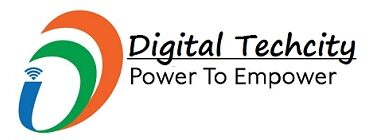No business owner wants to go through a software audit. It is a stressful, potentially expensive process that can disrupt operations. Unfortunately, software audits by vendors like Microsoft, Adobe, Oracle, and others are becoming increasingly common as they crack down on unlicensed software use.
Rather than being caught off-guard, it’s better to be proactively prepared for when the inevitable audit request letter arrives. Having your licensing ducks in a row prevents nasty surprises and makes the entire audit process much smoother. To that end, here are some tips for getting audit ready.
Know What You’ve Installed
The first crucial step is to gain full visibility into what software is actually installed across your entire IT infrastructure such as servers, virtual machines, clouds, user devices, etc. Always know what versions you are running and exactly how many instances are deployed.
Manual software inventories are impossibly tedious for any reasonably-sized organization. Use technical tools and asset management systems to automatically discover and track all your software deployments in real-time. This forms the foundation for proving licensing compliance.
Understand Your Licenses
Once you have an accurate installed software inventory, you need to contrast that against your recorded procurements and licensing entitlements. Make sure you can quickly determine how many licenses you own versus how many deployments you have.
According to the experts at Miro Consulting, each vendor has complex, unique license models and rules you need to follow carefully. For example, Oracle license reviews must consider tricky virtualization policies, while Microsoft incorporates user/device allowances. Do not operate based on assumptions; study and document your obligations.
Implement SAM Processes
A comprehensive, consistently enforced Software Asset Management (SAM) program is essential for ongoing license compliance. SAM establishes standard procedures around:
- Purchasing and recording new licenses.
- Reclaiming and removing unused licenses.
- Optimizing license deployment and usage.
- Retiring old software versions no longer needed.
- Monitoring for license violations or overages.
By institutionalizing SAM, you harden your ability to always remain audit-compliant rather than scrambling once auditors request information.
Designate Compliance Owners
Don’t let software licensing be an uncoordinated free-for-all within your organization. Explicitly designate an interdisciplinary compliance team involving IT, procurement, finance, and legal personnel who collectively own SAM responsibilities.
This compliance team should receive formal training on deeply understanding vendor-specific licensing rules. Their mission is enforcing disciplined governance over your software assets to mitigate risk.
Deploy Management Tools
Even with guidance and processes, manually tracking software licenses is extremely error prone. Specialized license management toolsets automate monitoring deployments versus entitlements while minimizing compliance exposures.
These solutions optimize your software footprint, generate audit-readiness reports on demand, and provide a system of record for all license ownership. The investment prevents much more costly statutory penalties down the road.
Plan for Renewals/Growth
Software asset management is not a one-time task; it’s an ongoing obligation. Make sure to account for future licensing needs like:
- Renewing expiring subscription licenses.
- Procuring licenses for growing software demands.
- Retiring outdated software hitting end-of-life.
Perform audits annually to right-size your licensing positions and allocate sufficient future budget. Avoiding surprises requires continually working ahead.
Conclusion
While no business relishes undergoing a software audit, being audit-ready yields big payoffs beyond just placating vendors. Responsible license management minimizes security risks from unpatched software while fueling efficiency and compliance across your operations.
Don’t give your auditors any unpleasant surprises when they come calling. Proactive compliance positions your business for enduring success. The initial investment and effort required pales in comparison to the potential legal, financial, and operational risks of being caught improperly licensed. Make software asset management an ongoing discipline, and audits become just a routine check-up rather than a looming specter.

